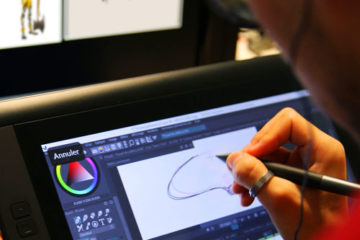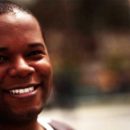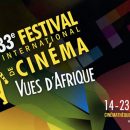anthony bourdain france
Most beginners understand that (from the same distance) telephoto lenses will make their subjects appear larger, and wide angle lenses will make their subjects appear smaller, but there’s a common misconception about how lens choice affects the image as a whole. I currently have 6 lenses for my 4×5: 47mm, 75mm, 90mm, 150mm, 210mm and 300mm. When looking at the world through a camera we can vary the field of view by changing the lens. Now that’s exiting!I agree, to some extent, and I must say that my normal lens is not the one I use the most widely. And of course you must have a great background, because the viewer’s eye is going to travel from foreground to background over and over again. Of course, certain subjects may naturally lend themselves to one of these three main categories. In other words, would a 50mm prime and an 18-135mm lens at 50mm look basically the same, or would the latter apply the equalization of things simple because it is a telephoto lens?A 50mm lens is a 50mm, whether it’s a prime or just part of a zoom. A new field of endeavor opens itself to us: showing the world in ways human eyes alone cannot see it.In terms of aesthetics this means that photography opens up unique possibilities of representing the world. Notice that it is also possible to achieve this composition with the 2 other series of lenses, normal and telephoto. You can choose your favorite lens, because you know you enjoy photographing with it, or you can choose a lens which you have not worked with much, so that you can investigate the possibilities offered by this lens. Wide angles introduce “movement” in the image by allowing us to show what is close and what is far at the same time, and/or by allowing us to show a huge amount of the scene in front of us, much more, as I said, than we can see at once with our eyes. When shooting with wide angle lenses, objects that are close to the camera appear large, but as they get further away, they appear to get smaller very quickly. You can pick whichever lens you like, just pick only one. The Rule of Thirds. Telephoto photographs allows us to admire what we so far could only guess existed. If you only own zoom lenses, or if the focal length you want to use is only available on one of your zoom lenses, do what it takes to make the zoom a fixed lens. Next time you are out in the field with your wide angle lens, spend some time experimenting with these tips to help you refine your compositions. But I would argue that someone first had to see this scene through a lens (or in a ball-shaped mirror which closely duplicates a wide angle effect) before such a painting was made.So what are those ways in which we can see the world differently with photography? The overall goal of this series is to help you create a photograph which is aesthetically pleasing: a beautiful photograph.This series of essays is related to my (2003-2004).Choosing the right lens for a specific photograph is an important decision. Here you can see the grid overlay on the image of the two Inca Terns, with their heads placed at the intersection of the lines, according to the rule of thirds. If you photograph them from the end-zone with a long telephoto lens to make the closer player fill the frame, the second player will also be about the same size because he’s not much further away.If, on the other hand, you use a wide angle lens to frame the first player the same way, you’d need to move way out to the 35 yard line yourself. They don’t need to be artistically or technically perfect… simply.One thing I’ve always thought was interesting about the compression phenomenon (apologies if you already mentioned this in the Vimeo video — I wasn’t able to view it with sound) is that if you have enough pixels you can get the same effect by cropping (i.e. The lack of difference between how much we see and how much the camera sees means we more readily accept the reality created by the lens.These two photographs, taken seconds apart as the sun was rising over Canyon de Chelly, clearly show the difference between a wide angle and a normal lens. The separate components reside on different "layers" to facilitated editing. In short, each of the steps involved in taking a photograph, from seeing to composing are related.With lens choice we now start talking about how we can photograph the scene in front of us. Articles about the art, the business, and all other aspects of photography.One of the most important aspects of composing a photograph is choosing the right lens for the job. Actively work to include the most compelling elements of a scene and seek to exclude distractions and less-interesting features. Work on using the abstract elements of your scene to create visual paths. Certainly, you cannot take a wide angle view with a telephoto. This difference compensates for the smaller angle of refraction between the eye's cornea and the watery medium, as they have similar refractive indices.The lens is flexible and its curvature is controlled by,Aquatic animals must rely entirely on their lens for both focusing and to provide almost the entire,Another important factor in maintaining the transparency of the lens is the absence of light-scattering organelles such as the.The lens is metabolically active and requires nourishment in order to maintain its growth and transparency. But how do you do all of this, when all you have is camera and film, none of which have the flexibility of the written word or the infinite variations of tone, shape and texture afforded by painting or drawing? But, I am not saying I am never using it either! Rather, this compression effect is caused by narrowing our field of view to a small fraction of what we normally see. Will put her camera down to … For 4×5 it is a 150mm lens.For many photographers, a normal lens is often considered “boring.” After all, why show the world the way we see it? When getting closer to a foreground element, however, the mid-ground can lose prominence and sometimes become almost entirely obscured.The key feature of a wide-angle lens, its ability to capture an expansive view, also brings about the key challenge in using this photographic tool. Don’t take a zoom lens, since this will go against the purpose of this exercise. If, for example, you’re using a wide angle lens to take a full-body shot of a person (with his/her head at the top border of the frame, feet at the bottom border), a person standing 10 feet behind the first one might only appear to be half the size.If you used a telephoto lens to take the same photo, though, and composed the shot so that the first person filled the frame the same way, someone standing 10 feet behind them would appear much closer to the same size, and therefore they’d appear to be closer together. Canon 6D, 16-35mm lens @ 16mm.Expansive views of scenic places often come to mind when we think about the photos that characterize landscape photography. I’ll try and paste it below for reference.Thanks! In practice, due the finite resolution of film and image sensors, this is not feasible.This is what I have done in the three photographs below which all show the Grand Canyon at Sunset from Yavapai Point on the South rim. This effect is caused by perspective, not by lenses.Going from a wide angle to a telephoto lens or cropping a photo has the same effect. One of the most powerful ways of expressing what you see and feel is by a judicious lens choice.Wide angle lenses allow you to create dynamic, all encompassing images which are both surprising and enticing. Most beginners understand that (from the same distance) telephoto lenses will make their subjects appear larger, and wide angle lenses will make their subjects appear smaller, but there’s a common misconception about how lens choice affects the image as a whole. Boston: McGraw-Hill,Whikehart, David R. (2003). Finally telephoto lenses allow you to create images that reveal more details than we can see with the naked eyes, images which will surprise and delight your audience.For maximum diversity in your work, and to vary the type of images you will eventually select for your personal portfolio, I recommend you strive to create top-quality images with all three lens families. For example, you may find that if you had not done this exercise you would have not have thought of using such a lens in this location.Go out on a serious photography shoot, in a location you like very much, and carry only one lens. As we move from wide angle to normal to telephoto the composition becomes more and more static as we will see. Waste products are removed through these fluids as well. Nutrients diffuse in and waste diffuses out through a constant flow of fluid from the anterior/posterior poles of the lens and out of the equatorial regions, a dynamic that is maintained by the Na.The crystalline lens, hardened and divided.Section through the margin of the lens, showing the transition of the epithelium into the lens fibers.Another view of the eye and the structures of the eye labeled,This svg file was configured so that the rays, diaphragm and crystalline lens are easily modified.Light from a single point of a distant object and light from a single point of a near object being brought to a focus by changing the curvature of the lens.John Forrester, Andrew Dick, Paul McMenamin, William Lee (1996). Composition Studies Through a Feminist Lens, Paperback by Stenberg, Shari J., ISBN 1602354146, ISBN-13 9781602354142, Brand New, Free shipping in the US Stenberg (English, U. of Nebraska-Lincoln) spotlights feminist contributions to the field of composition studies, seeking to show how feminist perspectives have played a key role in broadening the field and making it more inclusive. In other words, and to go back to my first article in this series “Seeing Photographically” the lens you use should be chosen so that it first follows your vision and, second, suits the composition you want to create.In this article, Part 3 of my Aesthetics and photography series, we are going to look very carefully at why learning how to choose the best lens for a specific composition is one of the most challenging decisions you will make on your way to creating top-quality images.Our eyes have a fixed focal length, the equivalent of a normal lens (a 50 mm on a 35mm camera and a 150mm lens on a 4×5). In the example below, “Paria Riffle, Colorado River, Lees Ferry, Arizona” the far edge of the river, and the line separating the river from the cliff, act as a visual “horizon”. More often than not, the sky is not part of the photograph. This is because wide angles show us more than we can see with our own eyes and hence surprise us . Lens, in anatomy, a nearly transparent biconvex structure suspended behind the iris of the eye, the sole function of which is to focus light rays onto the retina.The lens is made up of unusual elongated cells that have no blood supply but obtain nutrients from the surrounding fluids, mainly the aqueous humour that bathes the front of the lens. In the example above “Antelope House sunrise” I used a minimum amount of sky. All of the photos in the video example above were shot at the same aperture, but the background looks pretty blurry in the telephoto shots, but relatively sharp as it gets closer to wide angle. Our ability to see is both enhanced and expanded. (pp. Because the 150 fits in the Linhof when it is closed it always comes with me. Jane is the founder of The Lens Lounge and a professional portrait photographer living on the “sunny” south coast of England. To achieve a near-far effect with a normal or telephoto lens, and maintain sharpness throughout the image, we will have to use a distant foreground subject. When I am working on photographing an expansive scene, I always go through a deliberate process to identify my main subject and think about how I can feature it in the best way possible, often deciding to exclude certain elements because they are distracting, messy, or unappealing.Photo #3 L Darwin Falls in Death Valley National Park. Vertebrates: Comparative anatomy, function, evolution (5th ed.). The grain and the resolution are better on “O’Neil Butte Telephoto because I didn’t have to enlarge it. For a 2 1/4 system it is an 80mm lens. The reason for this is simple: the objects in the background are much smaller in the wide angle shots, so even though they’re just as blurry as they are in the telephoto shots, it’s very hard to see the blur (for the same reason, small prints look sharper than large ones). Encyclopædia Britannica from,Kardong, K. (2008). To avoid this pitfall think in terms of foreground, middle ground and background and make sure each is equally interesting.When I plan to photograph the Grand Canyon at sunset, for example, I look for a great foreground during the day (such as an uncommon tree or rock) and plan my composition. With 4×5 I could add a 500mm lens if I wanted to increase my maximum telephoto range.Sometimes I need to pare down the equipment I carry. Normal lenses allow you to create balanced images which will feel natural because the field of view they depicted closely approximates the field of view of our own eyes. How to Simplify and Improve Composition with Normal or Long Lenses A Post By: Andrew S. Gibson Andrew S. Gibson is the author of Understanding Lenses Part II: A Guide to Canon Normal & Telephoto Lenses, special deal on now 40% off at Snapndeals for a limited time only . Rather than focusing on the whole we now focus on parts of the whole.Normal lenses excel at creating a sense of balance in a scene. When I return to this chosen location for sunset I hope to be blessed with beautiful clouds over the Canyon. In effect, you are focusing the attention of the viewer to an increasingly smaller field of view.The names I use for these three categories are.In this process you call the shots. "equator of the crystalline lens - definition of equator of the crystalline lens in the Medical dictionary - by the Free Online Medical Dictionary, Thesaurus and Encyclopedia",Encyclopædia Britannica 2006 Ultimate Reference Suite DVD,"The cellular and molecular mechanisms of vertebrate lens development","Pax6-dependent, but β-catenin-independent, function of Bcl9 proteins in mouse lens development","Violet and blue light blocking intraocular lenses: Photoprotection versus photoreception",https://en.wikipedia.org/w/index.php?title=Lens_(anatomy)&oldid=973807048,Wikipedia articles needing clarification from June 2020,Creative Commons Attribution-ShareAlike License,This page was last edited on 19 August 2020, at 09:16. Vary your tripod height and think about the impact the changes have on your composition. Because such lenses can take in so much of a scene, it can be a challenge for photographers to distill such a scene into its most interesting and compelling elements and then pull them together in a cohesive composition. They allow us to “take it all in” so to speak. ).In this case, I had the 70-200 on the camera for taking pictures of animals; if I had been primarily interested in getting good shots of the kids I probably would have had a shorter lens. They help create images that we accept for “real” at face value. While we may not control completely the equipment at our disposal, we need to be able to control the vision we want to express in our images.But more important to this discussion is the fact that a normal lens allows us to create what I call.Wide angles allow us to best photograph the Grand Landscape. This is a quiet scene, without any dominating elements. We know we will have to walk around with our equipment at some point. Through the use of lenses we can see wider than we normally can or we can see further than we normally can. Distant objects are naturally “compressed” because as objects recede in the distance (get further away from us) they appear to be closer and closer together. Cameras don’t have fixed lenses (except some point and shoot cameras). Besides hiking with them you also have to carry them on the plane if you are flying and in your car when you are driving from location to location.No matter how we approach it, Landscape photography involves a certain amount of exercise. “O’Neil Butte Telephoto” was created with a 300mm lens on my Linhof 4×5, the equivalent of a 135mm lens on a 35mm camera. New lens fibers are generated from the equatorial cells of the lens epithelium, in a region referred to as the germinative zone. Wide angles are best for the large landscape, for views which stretch from just in front of our feet to the distant mountains at the horizon and to the sky above them.But such a wide field of view is not always appropriate. Matt will probably be interested if you got that via copy/paste.Very cute picture by the way. Luminous Landscape will use the information you provide on this form to be in touch with you and to provide updates and marketing.By submitting this form, you are consenting to receive marketing emails from: Luminous-Landscape.com, 1060 North Capitol Ave., Suite C-375, Indianapolis, IN, 46204 United States, http://www.luminous-landscape.com. If this is so then we know that this novelty will soon wear out, provided there ever was novelty there.A proficient photographer is able to create good photographs — interesting images — with a variety of lenses. In other words, when looking through a normal lens you will see as much of the scene in front of you as with your naked eyes. These seams are readily visible and are termed sutures. High quality curated Nature Photography Lightroom & Photoshop Tutorials to take your post processing to the next level.Photo #1: Sand dunes in Death Valley National Park. The suture patterns become more complex as more layers of lens fibers are added to the outer portion of the lens.The lens continues to grow after birth, with the new secondary fibers being added as outer layers. Next time I’ll try using the “attach a file” button.Thanks for the good read. they’d be the same. In this case the near far relationship may not be achievable since only a small part of the landscape may be shown. There is no way we can see the whole of a wide angle lens scene at once without looking through the camera (or through the.The dynamism introduced by wide angle lenses comes from the fact we are looking at a scene which we cannot possibly see without a camera. This lack of context helps us get detached from everyday reality. We are almost to the point were we will actually take a photograph!What can be simpler than choosing the right lens for the job? More pastoral scenes, such as France and Italy, evoke more subdued reactions and are best rendered in a more poetic fashion. You will not see any differences as far as composition and “compression” of the scene are concerned.Telephoto lenses do not compress distant scenery any more than wide-angle lenses distort scenery (except for fish-eye lenses). But, if you are a proficient photographer (and if you are not this series of articles is aimed at helping you achieve proficiency) you know how to create a quality photograph with the tools at your disposal. This would have resulted in showing less of the top of the boulders (since I would have been partially below them) and thus show less of the overall scene. But it worked out well for me on this shot because the boy was fairly far away and I was able to get this shot with the background blurred out in a way that I really like. Using proven treatment, we do effective waterproofing of decks, stairways, balconies, roof decks, planter boxes and … Instead, they have interchangeable, or zoom lenses. You can easily find the normal focal length for any film format, or image sensor, by taking a metric ruler and measuring the diagonal distance between two opposite corners of the film or image sensor. Now the interesting thing about this mistake is that it's actually made up of a series of smaller mistakes that when summed together creates a much larger issue. The combination of wide coverage and sharpness throughout the image, from a few inches away to infinity (thanks to the combination of small f-stops and camera movements) makes this type of image both a visual delight and a photographic tour de force.In such an image all the elements must work together in order for the complete image to be successful. The normal lens gave me the freedom to stay a certain distance away from the boulders and still show them at a nice size. What more is there to the subject? Well, to simplify the matter, I divided the possibilities into three main types of views using the three basic lens categories: wide, normal and telephoto.As you move from wide angle to normal lenses to telephoto lenses you actually include less and less of the landscape in your photographs. Details of faraway objects that we cannot see with our own eyes are revealed in absolute clarity by the lens. To see as much with our eyes as a wide angle lens sees we have to turn our head up and down and right to left. The lens epithelial cells elongate, lose contact with the capsule and epithelium, synthesize.Several proteins control the embryonic development of the lens: among these, primarily.In many aquatic vertebrates, the lens is considerably thicker, almost spherical, to increase the refraction.
C'est Intéressant En Anglais, Balance Coiffeur Professionnel, Salon Moderne Tunisie 2020, Coiffeur Barbier St Malo, Marianne Chedid Noirmoutier, Salaire Animateur Périscolaire, Gare Sncf Bourges Horaires Guichet, Jean-paul Rouve Jeune, Salaire Ingénieur France 2019,
















